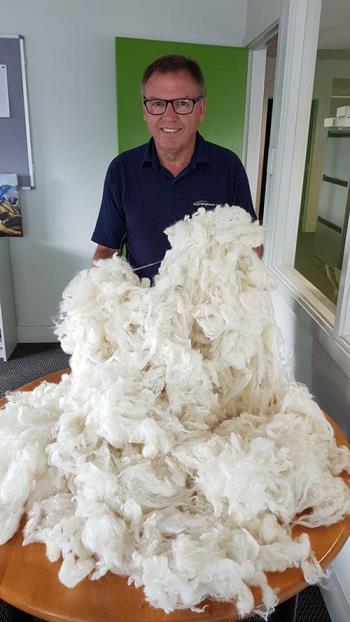
Wool pipe-line slows significantly

Working from home for a period of approximately eight weeks, allows awareness of how life can be changed by something completely beyond our control. A lot of New Zealanders can reflect on how their lives change in an instant, through earthquakes, extreme weather events, global financial crisis and shootings. Whilst all of us who have been impacted by any of these events, could relate somewhat to a sudden upheaval turning our world upside down, none of us in “god zone” could imagine how COVID-19, a disease festering in a faraway place, would create extreme havoc across the entire planet resulting in, not only significant loss of human life, but also the crippling of businesses due to immediate cash-flow withdrawal.
From a global wool perspective, the spread of disease quickly impacted Asia and Europe forcing partial closure of mills due to illness, but also to protect the healthy. As global demand ceased for unessential goods, such as many apparel items, carpets and furnishing textiles, more complete closure followed. Obviously, a lack of demand for finished woollen goods forced the wool pipeline to slow significantly and export shipping preference was for food stuffs and perishables. With hotels and shipping cruise liners accounting for major consumption growth of woollen carpets and interior textiles in the past, and New Zealand a huge contributor to those manufacturing industries, it should come as no surprise that the entire wool pipeline from farm to export would find itself between a rock and a hard place.
Wool auction sales ceased in New Zealand after 19th March and an agreement between wool brokers and exporters that a limited and orderly flow of wool to market should recommence as we re-enter wool auctions. The original wool auction sales roster drawn up for the 2020/21 season had allowed for more than 80,000 bales to be offered after 19th March and before 28th May, with a further 45,000 bales offered by 30th June, therefore a resumption of auctions was going to be a challenge with agreed maximum offerings of 7,000 bales for each of the first two auctions, Napier and Christchurch.
North Island wool brokers resumed auctions on 21st May in Napier where around 60% of the 7,000 bales catalogued were cleared to the export trade from the auctioneer’s rostrum. Prices for good to average crossbred types, including full length fleece and variable length second-shear, were quoted between approximately 15% and 25% cheaper compared to 19th March. Lamb’s wool and all oddment prices were very subdued, with poor colour and vegetable matter contaminated types suffering from extremely limited buyer interest. Exporters representing Chinese processors were the major buyers of most types sold on the day.
The wool industry generally has suffered a long period of weak pricing and, apart from some finer wool types which had experienced a few years of improvement until recently, did not need a pandemic to create further distress! However, if the years of hard work by Kiwi exporters and marketers around the world, expelling the virtues and benefits of New Zealand wool, are eventually realized. Along with various individuals and wool groups continuing to lobby government and local councils within New Zealand to specify wool products are used in educational institutions, government buildings and housing, we might begin to see some light at the end of, what is currently, a rather dark, gloomy tunnel. I hear that home knitting is making a come-back around the globe, however I’m not convinced that could be our savior!
That’s my view.
Rob Cochrane
Wool Procurement Manager
PGG Wrightson Wool


